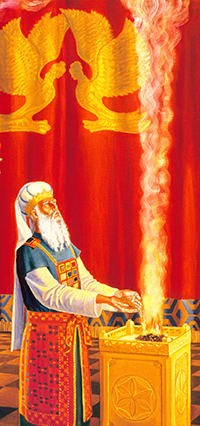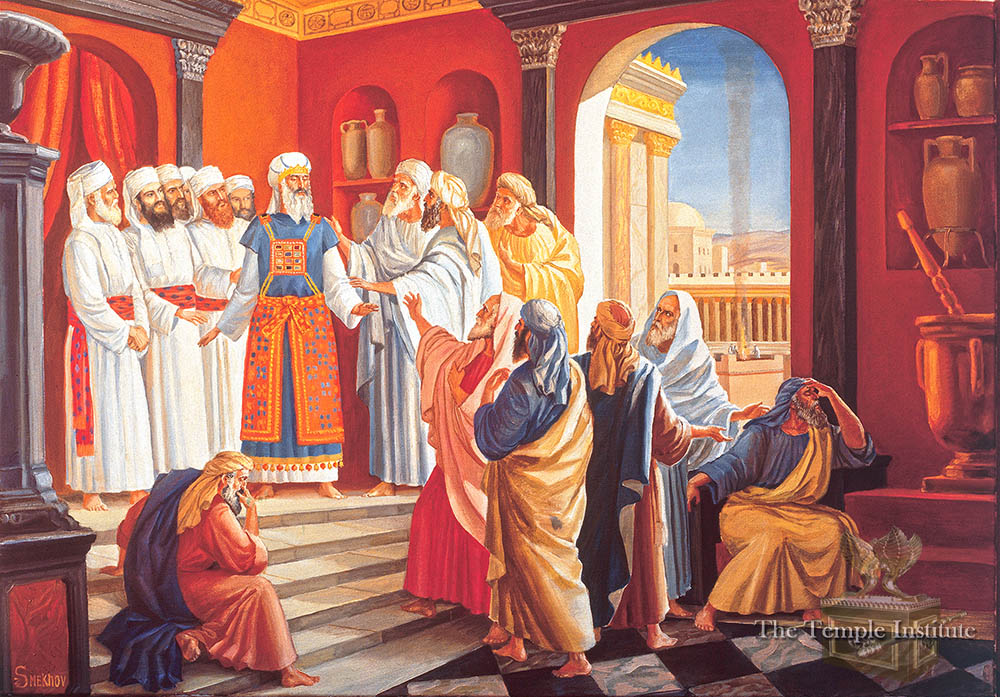
출처: https://templeinstitute.org/

The Priestly Garments of the High Priest & Ordinary Priests
The Priestly Garments of the High Priest & Ordinary Priests
"And draw near to yourself your brother Aharon, and his sons with him, from among the children of Israel to serve Me [as kohanim]: Aharon, Nadav, and Avihu, Elazar, and Itamar, Aharon's sons. You shall make holy garments for your brother Aharon, for honor and glory. And you shall speak to all the wise hearted, whom I have filled with the spirit of wisdom, and they shall make Aharon's garments to sanctify him, [so] that he serve Me [as a kohen]. And these are the garments that they shall make: a choshen, an ephod, a robe, a tunic of checker work, a cap, and a sash. They shall make holy garments for your brother Aharon and for his sons to serve Me [as kohanim] ... " (Exodus 28:1-4)
The Priestly Garments of the High Priest & Ordinary Priests

Moshe was instructed by G-d that the garments of the priests were to be both dignified and beautiful; as precious as the garments of royalty. Indeed, the Talmud informs us that when the wicked Persian king Ahasuerus made a feast for his advisors and officers and sought to impress them with his greatness (as recorded in the scroll of Esther, which tells the story of Purim) he put off his own royal vestments and donned the uniform of the High Priest... which was more precious than his own. These priestly garments were in his possession since the First Temple had been destroyed by the Babylonians.
Understanding Life in the Holy Temple
It is noteworthy and revealing that one of the finest ways to gain insight into both the details of life in the Holy Temple, and to its inner spirit, is by a study of the priestly garments.
We shall see that these garments are essential in order for the priests to function in their sacred capacity; so much so that in their absence, the offerings made by the priests in the Temple have no validity! Without his uniform, the priest who serves in the Holy Temple is considered like a "stranger" serving before the L-rd - like an ordinary non-priest. What, then, is the basis for the garments' powerful significance?
The Garments Possess An Intrinsic Holiness
No priest, neither lay nor the High Priest himself, is fit to serve in the Temple unless he is wearing the sacred garments. As the Talmud states, "While they are clothed in the priestly garments, they are clothed in the priesthood; but when they are not wearing the garments, the priesthood is not upon them" (BT Zevachim 17:B). Conducting the service without these garments would render the priests the same as those who are not descendants of Aharon - all of whom are unfit for service in the Temple.
Why does the Bible attach so much significance to the garments? Because their quality is such that they elevate the wearers - Aharon and all his descendants - to the high levels of sanctity required from those who come to serve before G-d in the holy place. These garments themselves possess a certain holiness; powerful enough to sanctify all those who merely come in contact with them, as we read in the prophets: "... so as not to hallow the people with their garments" (Ezekiel 44:19).
Actually, the Hebrew expression which we are translating as "sacred" or "holy" garments also means "garments of the Temple;" that is, the garments themselves show that their wearers are standing in the Divine service.

The Garments Atone for Sins
Another important quality of the priestly garments is that their very presence, worn by the kohanim during the Temple service, serves to atone for the sins of Israel. It is taught that just as the offerings facilitate an atonement for sin, so do the priestly garments. (BT Zevachim 88:B)